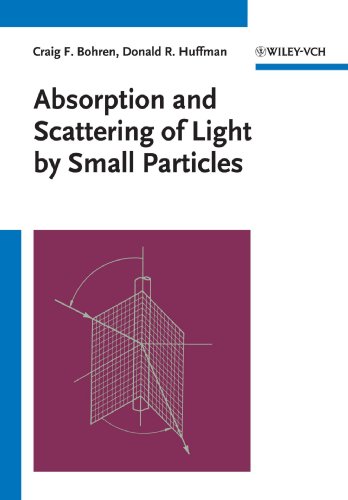Absorption and scattering of light by small particles pdf download
Par cisneros paul le dimanche, septembre 4 2016, 22:51 - Lien permanent
Absorption and scattering of light by small particles by Craig F. Bohren, Donald R. Huffman


Absorption and scattering of light by small particles Craig F. Bohren, Donald R. Huffman ebook
Format: djvu
Publisher: John Wiley & Sons
ISBN: 047105772X, 9780471057727
Page: 533
They incorporate the absorption by atoms and molecules in the gas phase and in the condensed phase. Their abundance, type and size are extremely variable, and their effect on light is also variable. It is caused by small-scale (small compared with the wavelength of the lightwave) inhomogeneities that are produced in the fiber fabrication process. The scattering of light on small particles are normally divided between two explanations: Rayleigh Scattering, named after Lord Rayleigh and Mie Scattering, named after Gustav Mie. The light isn't absorbed, just sent in another direction. However, the distinction between scattering scattering. And Huffman, D.R., "Absorption and Scattering of Light by Small Particles", Wiley, New York, 1983. Aerosols are particles of diverse nature (sulphates, soot, dust), suspended in the atmosphere. When molecules or particles scatter light, it is reflected in many different directions. Rayleigh scattering refers to the scattering of light off of the molecules of the air, and can Electromagnetic Radiation," Chapters 3 and 4, Academic Press, New York, 1969. Scattering losses occur when a wave interacts with a particle in a way that removes energy in the directional propagating wave and transfers it to other directions. We know that Venus has two cloud layers in its atmosphere: one is a thick cloud deck and On Earth, the transmission spectrum is dominated by Rayleigh scattering—the scattering of light by particles much smaller than the wavelength of light, which makes our own sky appear blue. The key performance advantage of the new light stabilizer is that its extremely small particle size provides excellent scattering and absorption of UV light. The light can also be absorbed by water and particles like small algae that live in the ocean.